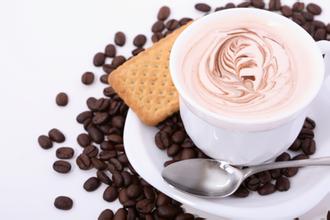Ethiopian coffee beans G1 and G2 are just different in the number of defective beans?
Ethiopian coffee beans G1 and G2 are just different in the number of defective beans?
1. After picking beans without special screening and treatment, uneven appearance and maturity are mixed together, the process is relatively rough, so the quality of coffee beans is unstable and prone to defective beans.
two。 Coffee farmers usually find an open space near their home to deal with it, so there are often a lot of impurities or dirt on the ground, and coffee is easy to get smelly.
The improved method of tanning, that is, to improve the two shortcomings of the traditional way:
1. When picking beans, only fully ripe crimson coffee cherries are picked. Before exposure, the beans will be screened for defects in the processing plant to make the beans look more average in size and maturity.
two。 Next, use tall wooden frames or whole scaffolding for the sun to avoid the risk of beans smelling on the ground. In the process of exposure, take good care of the beans so that the coffee beans can be evenly exposed to water; every three to five days, coffee workers will manually screen out defective and moldy beans. Therefore, by the end of the exposure, before the beans enter the market to remove the peel and flesh, a bright crimson coffee cherry is already a grade with few defects.
After obtaining the raw coffee beans, sometimes in order to pursue the perfect taste, the final screening will be done, so this sunny sidamo can reach the highest level of G1.
The coffee producing areas of Ethiopia are Hidamo, Harald and Sidamo, Harrar and Yirgacheffe. Sidamo and Harrar are provinces and divisions, Sidamo is located in the south of Ethiopia bordering Kenya, and Harrar is bordering Somalia in the east of Ethiopia. Although Yirgacheffe is a community in the Sidamo region, its coffee is considered to be the best in Ethiopia because of soil composition and water content.
In the West, Ethiopian coffee is generally sold on the market as Yega Xuefei, Hidamo and Harald (Yirgacheffee, Sidamo and Harrar). In the field of boutique coffee, there are five other small places of coffee, namely, Lim, Jima, Le Campdi, Becca and Limmu, Djimmah, Lekempti, Bebeka and Wolega. The most common is Essehidamo or Harald coffee (Either Sidamo or Harrar coffee).
Harald Coffee (Harrar Coffee) comes from the eastern highlands of Ethiopia, with medium bean size, green yellow, medium acidity, full alcohol thickness and typical mocha flavor (mocha flavor). It is one of the most famous coffee in the world. Wollega (Nekempte) coffee comes from the west of Ethiopia, with medium to large beans and is famous for its fruity flavor. The color is green and brown (greenish, brownish color), and the acidity and alcohol thickness are good. Can be made to match, can also be individual products. Limu Coffee coffee is famous for its aroma and wine taste (spicy and Winnie flavor) and is very popular in Europe and the United States. The acidity and alcohol thickness are good, and the water-washed lim coffee is also the favorite of fine coffee. The bean shape is medium, greenish blue, mostly round. Sidama Coffee coffee has medium bean shape and green gray. Hidamo washed coffee is known as sweet coffee (sweet coffee) with balanced taste and flavor. It has fine acidity and good alcohol thickness. It is produced in the south of Ethiopia and can be mixed with boutique products. Yirgacheffe Coffee has a strong floral flavor. Washed Yega Chuefei is one of the best high-estate coffee in the world with soft acidity and rich thickness. Tepi and Bebeka coffee, with low acidity but high alcohol thickness, are indispensable members of blended coffee (data: ethiopian).

Important Notice :
前街咖啡 FrontStreet Coffee has moved to new addredd:
FrontStreet Coffee Address: 315,Donghua East Road,GuangZhou
Tel:020 38364473
- Prev

Description of the characteristics and Flavor of Columbia Linglong Coffee beans introduction to the Grinding scale of the Manor
Columbia Linglong Coffee Bean characteristics and Flavor description the manor taste grinding scale introduces that Nalinglong province is closer to the equator, about one degree north latitude, and has plenty of light throughout the year; the elevation is more than 1600 meters, and there are many snow peaks all the year round. Steep mountains and long and steep slopes bring a warm and diverse climate, and the warm and humid air rising from the canyon makes coffee grown at high altitude
- Next

Flavor description of El Salvador Pacamara Coffee beans; introduction to the regional treatment of manor production
El Salvador Pacamara coffee bean flavor description taste manor regional treatment method El Salvador attaches importance to the development of relations with neighboring countries and other Latin American countries, and actively promotes the process of Central American integration with the northern triangular countries as the core. In February 2000, sa representatives attended the EU Central American meeting in San Jose, and in April, President Flores met with the President of Brazil in Nicaragua.
Related
- Detailed explanation of Jadeite planting Land in Panamanian Jadeite Manor introduction to the grading system of Jadeite competitive bidding, Red bid, Green bid and Rose Summer
- Story of Coffee planting in Brenka region of Costa Rica Stonehenge Manor anaerobic heavy honey treatment of flavor mouth
- What's on the barrel of Blue Mountain Coffee beans?
- Can American coffee also pull flowers? How to use hot American style to pull out a good-looking pattern?
- Can you make a cold extract with coffee beans? What is the right proportion for cold-extracted coffee formula?
- Indonesian PWN Gold Mandrine Coffee Origin Features Flavor How to Chong? Mandolin coffee is American.
- A brief introduction to the flavor characteristics of Brazilian yellow bourbon coffee beans
- What is the effect of different water quality on the flavor of cold-extracted coffee? What kind of water is best for brewing coffee?
- Why do you think of Rose Summer whenever you mention Panamanian coffee?
- Introduction to the characteristics of authentic blue mountain coffee bean producing areas? What is the CIB Coffee Authority in Jamaica?

